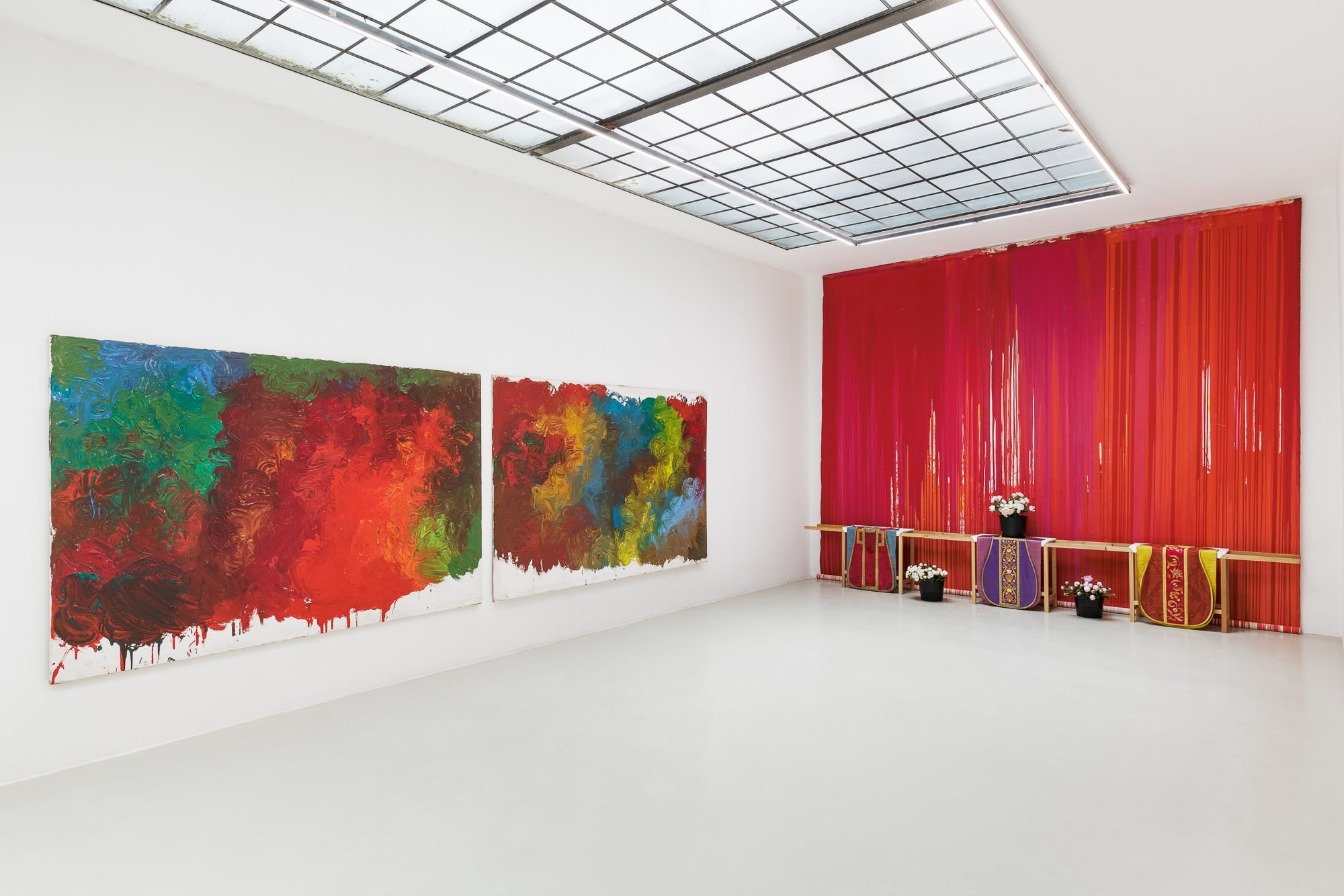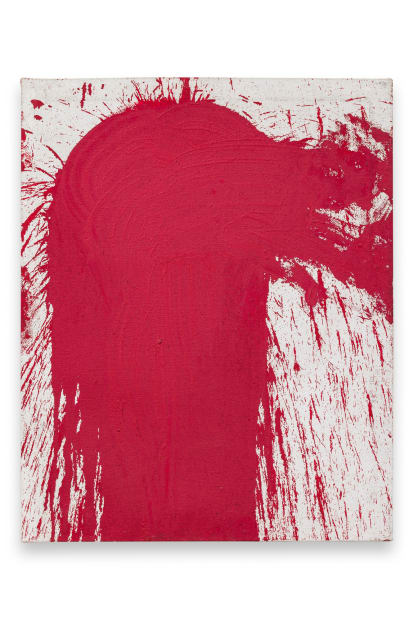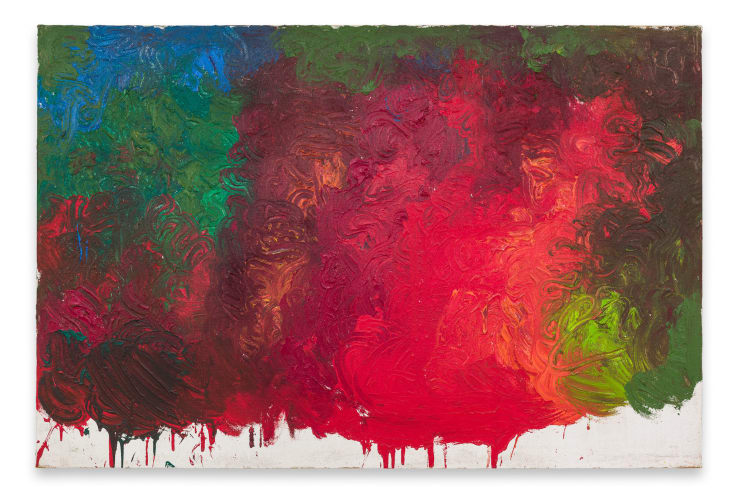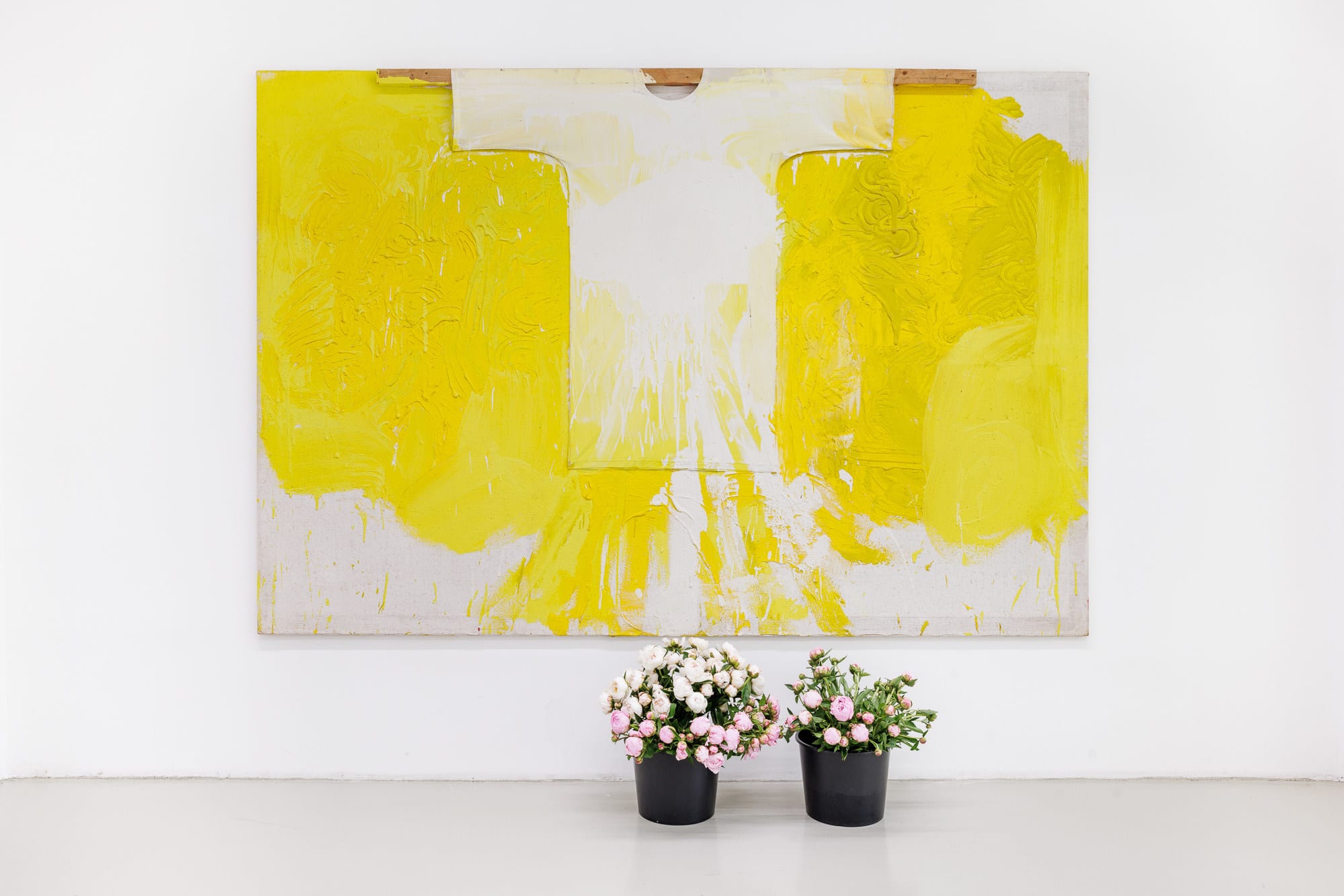-
Hermann Nitsch
-
„paint is poured and splashed onto a surface and then smeared, pulpy color mass is smeared upon the picture. the painting process becomes a real happening. theatre occurs on the perspective plane. I always say that the painting of the O.M. theatre is the visual grammar of my theatre on such a surface. the intrinsic action, the intrinsic action theatre leaves the places of refuge of the painting itself and goes beyond space to total reality.“
- Hermann Nitsch
-
 Installation View, Hermann Nitsch, 2022
Installation View, Hermann Nitsch, 2022 -
-
 Hermann NitschSchüttbild , 1990Acrylic on Canvas100 x 80 cm
Hermann NitschSchüttbild , 1990Acrylic on Canvas100 x 80 cm -
 Herman NitschGPBF_3.Akt_middle_A, 2021Acrylic on Canvas500 x 500 cm
Herman NitschGPBF_3.Akt_middle_A, 2021Acrylic on Canvas500 x 500 cm -
 Installation View, Hermann Nitsch, 2022
Installation View, Hermann Nitsch, 2022 -
-
 Installation View, Hermann Nitsch, 2022
Installation View, Hermann Nitsch, 2022 -
-
 Hermann NitschSynästhesieraum (audio visual design: Frank Gassner), 2015video room, four projectors, vinyl carpet488 x 373 x 253 cm
Hermann NitschSynästhesieraum (audio visual design: Frank Gassner), 2015video room, four projectors, vinyl carpet488 x 373 x 253 cm -
-
-
 Hermann NitschO.T., 2020Ölkreide auf Papier29 x 21 cm
Hermann NitschO.T., 2020Ölkreide auf Papier29 x 21 cm -
Hermann Nitsch
Past viewing_room





















